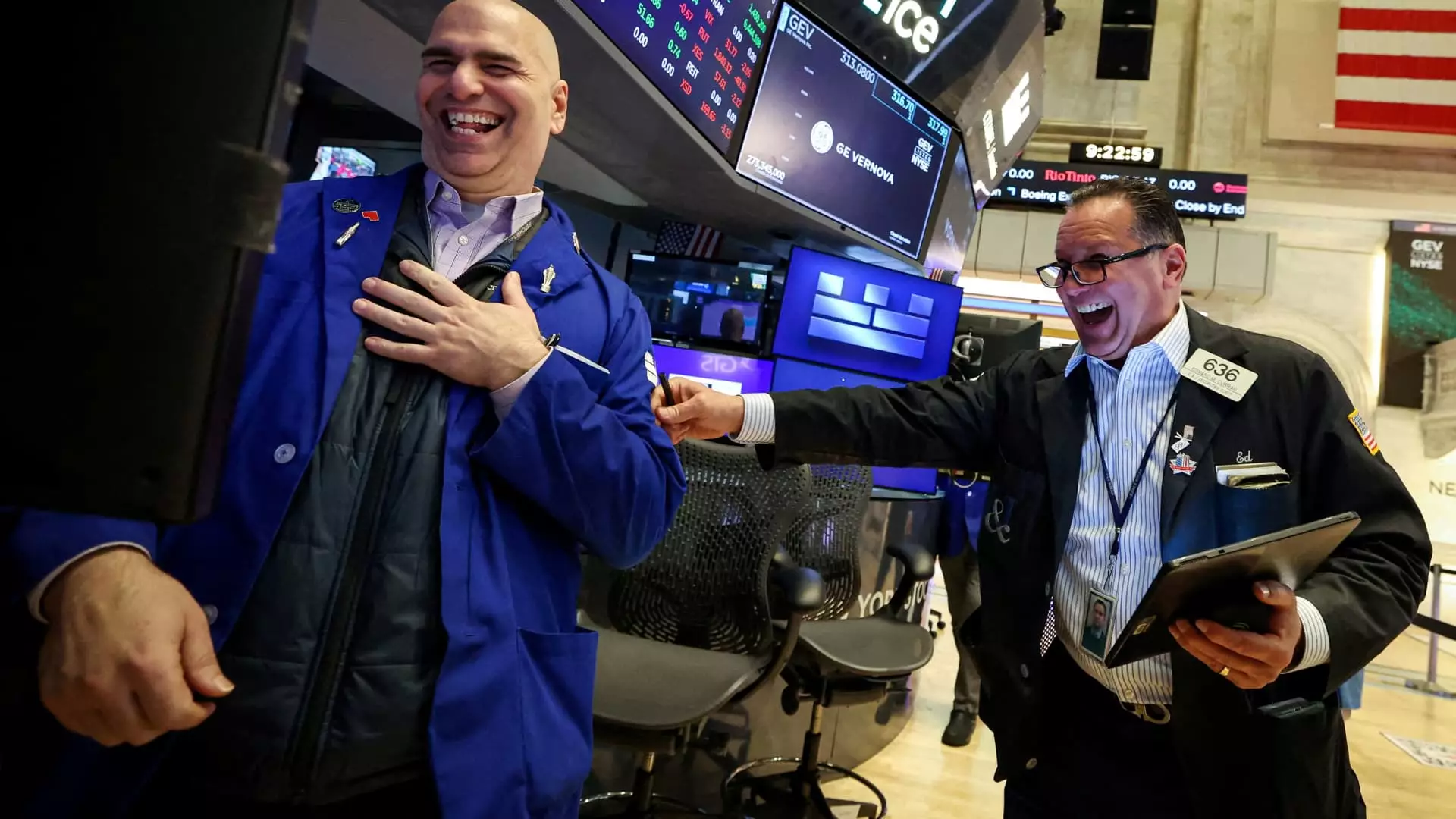The stock market isn’t just a reflection of economic fundamentals—it’s an arena where chaos and strategy collide, especially when it comes to the tactics of short sellers. Recently, we observed a dramatic two-day stock market rally that many regard as a product of frantic short covering rather than substantive economic progress. Short sellers, essentially betting against stock prices, were compelled to close their positions as prices began to defy their expectations. This self-sustaining cycle creates immense volatility and, at times, misleading optimism in the market. The spike is attributed not to genuine economic indicators or improved corporate earnings, but largely due to hedge funds scrambling to mitigate losses in the face of climbing stock values.
The Mechanism Behind the Madness
Short selling operates on a simple yet treacherous premise: borrow an asset, sell it at a higher price, and hope to buy it back at a lower price to pocket the difference. While this sounds straightforward, the execution can be incredibly risky. When a short position takes an unexpected turn and prices rally instead, it incites a frenzy of buying back shares—leading to a short squeeze. This Wall Street phenomenon stirs up artificial buying pressure, often turning minor price adjustments into full-fledged market rushes. The recent rally showcased precisely this dynamic, which raises questions about the sustainability and legitimacy of such upward movements in stock prices.
A Sea of Baseless Optimism
The hysteria saw well-known market indices experience tremendous gains. While the Dow Jones Industrial Average soared over 1,100 points in one day, one must question the depth of this optimism. Without tangible developments—such as concrete trade deals or significant economic reforms—this gain feels more like a sugar rush from short-covering rather than a robust market recovery. Traders eagerly welcomed mere hints of easing trade tensions, primarily stemming from rhetoric rather than action. It’s a sobering reality that can be likened to building castles on quicksand.
The Role of Political Rhetoric
Political sentiment and the messages delivered by figures such as President Trump significantly influence market movements. Recently, a moderated tone regarding China and a surprising about-face regarding Federal Reserve Chair Jerome Powell injected temporary optimism into the stock market. However, are we building our financial future based on the shifting winds of political communication? These public disclosures tend to distract from the real issues affecting the economy, leading to a precarious sense of stability. The moment such rhetoric falters or backtracks—in the inevitable whirlwind of political tumult—the market may crash back down to earth, leaving a sobering reminder of its fragility.
The Falcon Wing of Finance
Despite the temporary hype, the reality is that hedge funds continue to play a cautious game, as highlighted by analysts like John Flood from Goldman Sachs. The striking observation that hedge funds haven’t transitioned from short-covering to long-term buying is glaring. Such hesitancy suggests a lack of confidence in the market’s trajectory. In fact, the fading enthusiasm visible in stock price movements hints at an unsteady foundation beneath the surface. Without the support of long-term investors who are willing to buy shares based on perceived fair value, this rally risks fizzling out like a firecracker rather than exploding into a sustained upward trend.
Caution Vs. Euphoria: The Investor’s Conundrum
Investors are caught in an emotional tug-of-war between caution and euphoria. The recent upswing may feel like a vindication for risk-takers, but it remains crucial to peel back the layers and reveal the underlying issues. Can any optimistic market sentiment truly be trusted if it lacks substantive backing? As prudent investors weigh their options, it becomes essential to separate the signals from the noise, particularly in a climate where market maneuvers can rapidly shift, leading us down an unpredictable path filled with highs and lows.
In essence, the real question remains: Will this rally sustain itself, or are we merely looking at a blip in the often tumultuous sea of the stock market? The uncertainty lingers, fostering a climate where genuine investors must stay astute and prepared.

